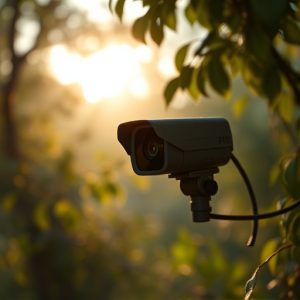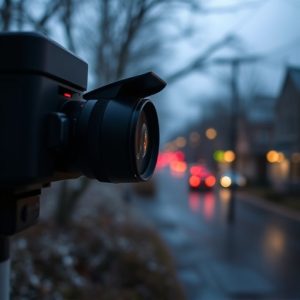Optimizing Discretion: Best Practices for Covert Camera Network Installation
When considering hidden cameras for home monitoring, research local laws regarding privacy, consent,…….
When considering hidden cameras for home monitoring, research local laws regarding privacy, consent, and monitoring reasons, ensuring legal compliance. Strategically place cameras in corners or everyday objects for discreet surveillance of high-traffic areas. Integrate cameras into the electrical system for clean installations, enhancing security with AES encryption, firewalls, and regular firmware updates to prevent cyber threats. Regularly review footage, optimize settings, and maintain network security through strong passwords and lens cleaning to ensure optimal performance and a safe living environment.
“Uncover the power of hidden cameras for home monitoring with our comprehensive guide on best practices for covert camera network installation. From navigating legal considerations to selecting optimal placement spots, this article equips you with the knowledge needed to securely integrate cameras into your home’s wiring system. Learn essential security measures and effective maintenance tips for your discreet surveillance network, ensuring peace of mind and unparalleled safety.”
- Understanding Legal Considerations for Home Surveillance
- Choosing the Right Location for Discreet Camera Placement
- Integrating Cameras Seamlessly into Your Home's Wiring System
- Security Measures to Protect Your Hidden Camera Network
- Maintaining and Monitoring Your covert Camera Network Effectively
Understanding Legal Considerations for Home Surveillance
When considering hidden cameras for home monitoring, it’s crucial to understand and respect legal considerations. The use of surveillance technology is heavily regulated, and violations can lead to severe consequences, including hefty fines and potential imprisonment. Each jurisdiction has its own set of laws governing the installation and operation of covert camera networks. These regulations often focus on privacy rights, consent, and reasons for monitoring.
Homeowners should thoroughly research local laws before installing hidden cameras. This involves understanding what types of areas can be monitored without permission, such as common areas within a building or visible outdoor spaces. Obtaining explicit consent from residents or employees is essential, especially when capturing images in private spaces. Additionally, the purpose of surveillance must align with legal frameworks, ranging from security to prevention of crime, and not for invasive or malicious reasons.
Choosing the Right Location for Discreet Camera Placement
When it comes to installing a covert camera network, choosing the right locations for discreet camera placement is paramount for effective home monitoring. Hidden cameras should be strategically positioned in areas that offer optimal visibility while remaining hidden from view. Common spots include corners of rooms, behind furniture, or inside everyday objects like plants or ceiling fans. These locations provide clear line-of-sight without drawing attention to the surveillance equipment.
Consider factors such as lighting, angle of view, and potential blind spots when selecting camera positions. Ensure that the chosen spots allow for a comprehensive view of high-traffic areas or valuable assets within the home. With careful planning and placement, hidden cameras can provide round-the-clock monitoring, enhancing security and peace of mind for homeowners.
Integrating Cameras Seamlessly into Your Home's Wiring System
Integrating hidden cameras into your home’s wiring system is a strategic move for effective home monitoring, ensuring a seamless and unobtrusive setup. Start by identifying potential locations where discrete surveillance is necessary—such as entryways, living rooms, or even indoor gardens. Consult with a professional electrician to assess your home’s existing wiring and determine the best points of connection for cameras without disrupting the aesthetic appeal of each room.
This process involves careful planning and precise execution. Wiring hidden cameras directly into your home’s electrical system allows for clean and secure installations. By integrating them seamlessly, you achieve optimal performance while maintaining the privacy and security that come with well-placed hidden cameras for home monitoring.
Security Measures to Protect Your Hidden Camera Network
To ensure the security and effectiveness of your hidden camera network, several robust measures must be implemented. Firstly, encrypt all data transmitted by the cameras to prevent unauthorized access and viewing. Using strong encryption protocols like AES ensures that even if someone intercepts your footage, they won’t be able to decipher it without the key.
Regularly update firmware and software for all devices in your network. Updates often include security patches that protect against known vulnerabilities, enhancing the overall security posture of your hidden camera system. Additionally, establish a secure network infrastructure with firewalls and intrusion detection systems to safeguard against cyberattacks and unauthorized access attempts.
Maintaining and Monitoring Your covert Camera Network Effectively
Maintaining and monitoring a covert camera network is crucial for effective home monitoring with hidden cameras. Regularly review footage to ensure the system is functioning as intended, adjusting settings as necessary to optimize picture quality and coverage. Implement motion detection alerts to receive notifications when activity triggers a camera’s activation, allowing you to respond promptly to any potential issues or intrusions. Keep your network secure by utilizing strong passwords and encryption protocols to protect sensitive data from unauthorized access.
Additionally, stay up-to-date with firmware updates to ensure optimal performance and patch any security vulnerabilities. Regular maintenance includes cleaning lenses for clear images, testing power supplies, and checking cable connections to prevent disruptions in the network. By adhering to these practices, you can leverage your hidden cameras’ capabilities to the fullest, ensuring a safe and secure living environment.
Installing a hidden camera network for home monitoring requires careful consideration of legal, placement, integration, security, and maintenance aspects. By understanding the best practices outlined in this article – from navigating legal boundaries to effectively maintaining your system – you can create a robust, discreet surveillance solution tailored to your needs. Remember, responsible use of technology is key; ensure your hidden cameras for home monitoring respect privacy while enhancing security.


